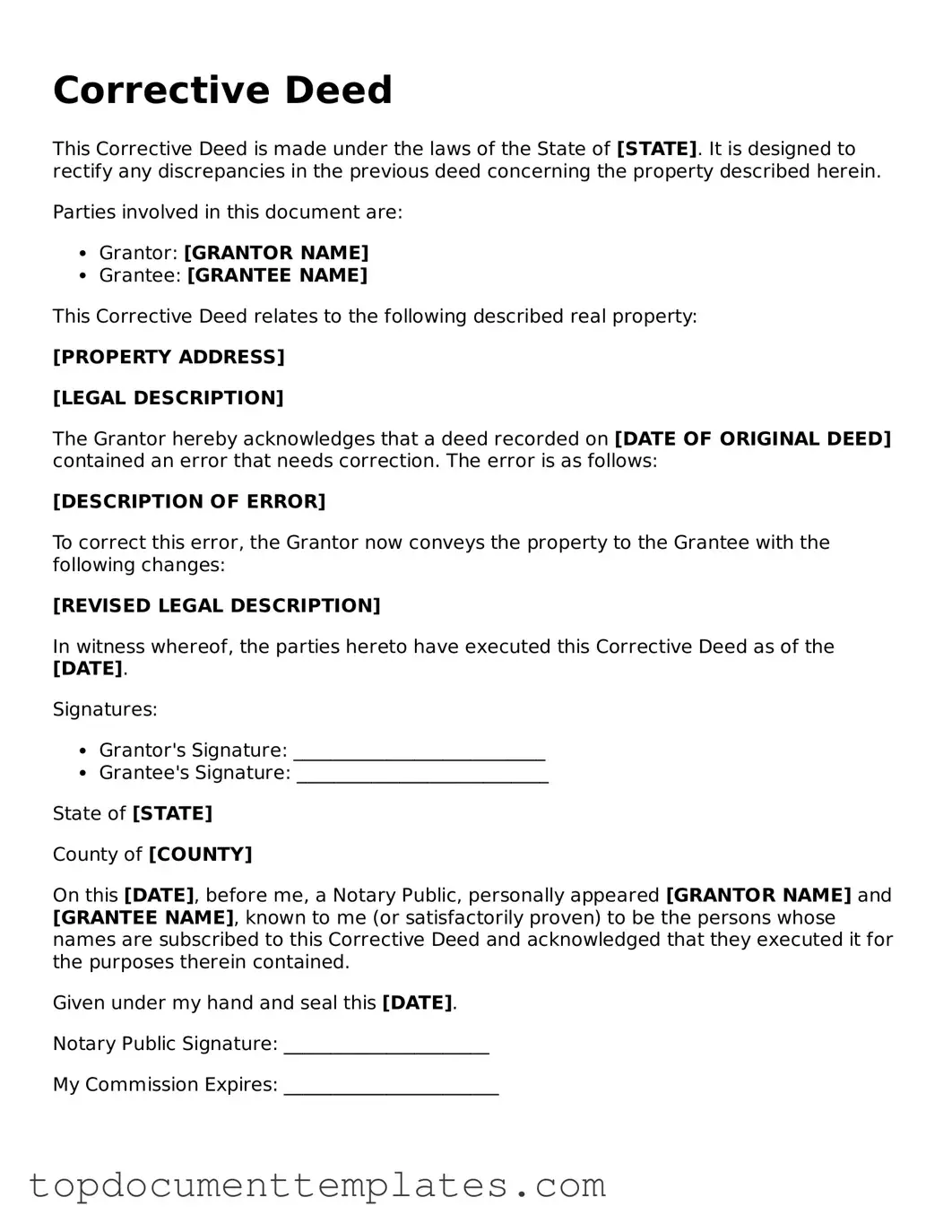The Corrective Deed form plays a crucial role in real estate transactions, serving as a vital tool for property owners and buyers alike. This document addresses errors or omissions in previously executed deeds, ensuring that the public record accurately reflects ownership and property details. Whether it’s a misspelled name, an incorrect legal description, or a missing signature, the Corrective Deed provides a straightforward solution to rectify these issues. By utilizing this form, parties involved can avoid potential legal disputes and maintain the integrity of property titles. It is essential for anyone navigating the complexities of real estate to understand the importance of this form, as it not only clarifies ownership but also safeguards the interests of all parties involved. With the Corrective Deed, property owners can confidently move forward, knowing that their rights are protected and the details of their property are correctly documented.
